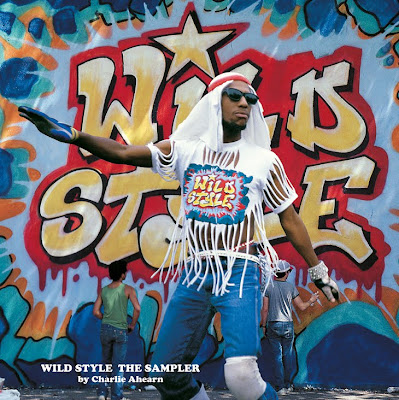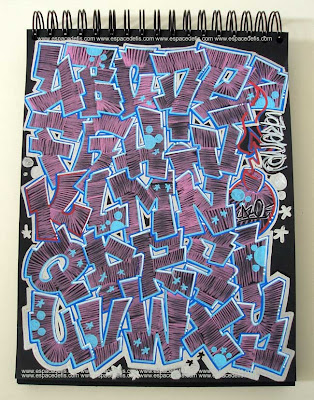Peter Paul Rubens and Anthony van Dyck, the greatest Flemish artists of the seventeenth century, are the characters on the international stage, namely that the Catholic church and the royal court and the central European trade. As a painter of religious images, mythological scenes, classical and modern history, and portraits, Rubens has a wider impact than Van Dyck. But as a painter, Van Dyck far more influential, especially in England, where he spent most of the 1630s and his work inspired artists for the next 150 years (Thomas Gainsborough [20.155.1] is the most gifted admirer).
Van Dyck was also a highly expressive painter of religious themes and, as a draftsman, a sensitive landscapist, although in the latter field Rubens surpassed every other Flemish painter (A Forest at Dawn with a Deer Hunt [1990.196] is one of a few dozen landscapes Rubens painted mainly for his own pleasure.) Van Dyck's reputation as a portraitist was enhanced by his large series of etchings called the Iconography. Not a printmaker but an astute entrepreneur, Rubens supervised the reproduction of his compositions in hundreds of engravings.
In contrast to the teenaged prodigy van Dyck, who was about twenty-one when he painted the self-portrait illustrated here (49.7.25), Rubens did not develop quickly as an artist. In his early years, he received an exceptional education, experience as a page in a noble house, and training in the studios of three Antwerp painters, most importantly that of Otto van Veen, who probably encouraged Rubens's trip to Italy in 1600. Here he absorbed profound impressions from classical sculpture and the works of Italian artists such as Raphael, Leonardo, Michelangelo, Correggio, Tintoretto, Caravaggio, and Annibale Carracci. Rubens remained in Italy for eight years, supported by commissions from the duke of Mantua, Genoese nobility, and great Roman patrons, including major orders of the Catholic church. Before the end of 1608, when he returned to Antwerp, he had painted some of the most important altarpieces in Genoa, Rome, and elsewhere in Italy. This experience provided the groundwork for his extraordinary output of religious pictures during the next fifteen years in Antwerp, which he managed by organizing a large workshop of pupils and assistants.
Rubens was appointed court painter to Archduke Albert and Archduchess Isabella, who governed the Southern Netherlands from Brussels on behalf of Spain. However, the artist chose to remain in Antwerp, where he married and built a house and large studio in a Northern version of the modern Italian style. The altarpieces he supplied to Antwerp churches—like the two great triptychs now in the Antwerp Cathedral, The Raising of the Cross and The Descent from the Cross—were often funded by distinguished laymen with a discerning knowledge of the arts, such as the burgomaster Nicolaes Rockox. The Wolf and Fox Hunt of about 1615–21 (10.73) is the first of several large hunting pictures that Rubens made as alternatives to tapestries and sold to patrons like the duke of Bavaria. He also collaborated with other Antwerp artists, for instance, Jan Brueghel the Elder (45.141) and Frans Snyders, to produce mythological and other pictures intended mainly for connoisseurs.
In all of these works—religious paintings, tapestry designs, book illustrations, and other projects—Rubens exhibited extraordinary learning and imagination. Among the many examples of his insightfully conceived iconographic programs was the spectacular series of thirty-nine ceiling paintings for the Jesuit Church in Antwerp. The canvases (later destroyed in a fire) were actually painted mostly by van Dyck, after Rubens's oil sketches, his preferred method of formulating compositions. These modelli (models), fluid studies in oil paint on comparatively small wooden panels, were used both as proposals to patrons and as guides for assistants. One of the few hundred known examples is The Triumph of Henry IV of about 1630 (42.187), the last of four oil sketches for a monumental canvas now in the Uffizi, Florence. The painting was part of a large cycle of canvases, never completed, that would have decorated the Luxembourg Palace in Paris. The pendant cycle of twenty-four paintings depicting the life of Maria de' Medici (Louvre, Paris) was installed in the palace in 1625.
In the later 1620s, the demands of Rubens's international clientele and his role in peace negotiations between England and Spain made him the "most harassed man in the world" (as he complained in his extensive correspondence). He spent seven months in Madrid in 1628–29, where he portrayed the royal family and made copies after Titian, and nine months in London in 1629–30 (the ceiling paintings of the Banqueting House at Whitehall, London, were completed in Antwerp by 1634). In 1630, Rubens remarried (1981.238) and in the next few years organized his studio to work efficiently in his absence; large-scale projects such as the decoration of the Torre de la Parada (Philip IV's hunting lodge near Madrid) and the decorative scheme for the triumphal entry into Antwerp of the new governor, Cardinal Infante Ferdinand, were executed almost entirely by assistants and collaborators following the master's designs. However, numerous landscapes, unofficial portraits, and other pictures were painted entirely by Rubens during this period, either in Antwerp or at his country estate of Steen (purchased in 1635). He died in 1640, leaving behind five children, an impressive art collection, and a body of work that profoundly influenced artists—including Watteau, Boucher, Fragonard, Reynolds, Géricault, and Delacroix—for more than two centuries.
The first important painters to respond to Rubens's work were Jacob Jordaens and van Dyck in Antwerp. Both artists adopted Rubens's practice of painting studies of live models (usually in bust-length) for later use as characters in religious pictures. (Van Dyck's Study Head of a Young Woman of about 1618–20 [57.37] may have become a repentant Magdalen or mourning Virgin, although no precise use is known.) Van Dyck began training as a painter under Hendrick van Balen at the age of ten; he already had his own studio and pupil when he joined the painters' guild in 1618. By the fall of 1620, the young painter of portraits and religious pictures was in the service of King James I of England, but in 1621 he returned to Antwerp and then departed for Italy, where he remained until late 1627. While there, he painted grand portraits of Genoese aristocrats and numerous other distinguished figures (14.40.619). He also studied antiquity and Italian painters, concentrating—far more than Rubens had—on the single model of Titian. The latter's influence is evident in Virgin and Child with Saint Catherine of Alexandria (60.71.5), which dates from the artist's "second Antwerp period" of 1628–32. Most of van Dyck's remaining years were spent in England, where he was knighted by Charles I and effectively created the enduring image of the Stuart court (89.15.16).
Van Dyck's brilliant brushwork, graceful arrangement of elegant figures, and seemingly effortless displays of luxurious drapery occasionally make him appear a more superficial master than Rubens. A fair number of the later English portraits, which are often largely by assistants, support this view. However, the lasting importance of direct observation in van Dyck's art is clear in both the style and character of his autograph portraits. Similarly, a sincere emotionalism lends substance to the seemingly nervous manner of his religious pictures. Perhaps only a temperamental prodigy with astonishing natural talent could learn so much from Rubens and at the same time become a great master of a very different kind.
Some Rubens artworks: Study of Two Heads
Study of Two HeadsPeter Paul Rubens (Flemish, 1577–1640)
Oil on wood
27 1/2 x 20 1/2 in. (69.9 x 52.1 cm)
Bequest of Miss Adelaide Milton de Groot (1876–1967), 1967 (67.187.99)
 Virgin and Child with Saint Catherine of Alexandria
Virgin and Child with Saint Catherine of AlexandriaAnthony van Dyck (Flemish, 1599–1641)
Oil on canvas
43 x 35 3/4 in. (109.2 x 90.8 cm); with added strips 44 1/8 x 37 in. (112.1 x 94 cm)
Bequest of Lillian S. Timken, 1959 (60.71.5)
 The Holy Family with Saints Francis and Anne and the Infant Saint John the Baptist
The Holy Family with Saints Francis and Anne and the Infant Saint John the Baptist, probably early 1630s
Peter Paul Rubens (Flemish, 1577–1640)
Oil on canvas
69 1/2 x 82 1/8 in. (176.5 x 208.6 cm)
Gift of James Henry Smith, 1902 (02.24)
 Wolf and Fox Hun
Wolf and Fox Hunt, ca. 1615–21
Peter Paul Rubens and Workshop (Flemish, 1577–1640)
Oil on canvas
96 5/8 x 148 1/8 in. (245.4 x 376.2 cm)
John Stewart Kennedy Fund, 1910 (10.73)
 A Forest at Dawn with a Deer Hunt
A Forest at Dawn with a Deer Hunt, ca. 1635
Peter Paul Rubens (Flemish, 1577–1640)
Oil on wood
24 1/4 x 35 1/2 in. (61.5 x 90.2 cm)
Purchase, The Annenberg Foundation, Mrs. Charles Wrightsman, Michel David-Weill, The Dillon Fund, Henry J. and Drue Heinz Foundation, Lola Kramarsky, Annette de la Renta, Mr. and Mrs. Arthur Ochs Sulzberger, The Vincent Astor Foundation, and Peter J. Sharp Gifts; special funds, gifts, and other gifts and bequests, by exchange, 1990 (1990.196)
source : http://www.metmuseum.org/toah/hd/rvd_p/hd_rvd_p.htm
 Crawling from the Wreckage, 101cm x 101cm
Crawling from the Wreckage, 101cm x 101cm Lightning Class Cruisers. 223 x 175cm
Lightning Class Cruisers. 223 x 175cm Everything We've Done is Forgiven. 223cm x 175cm
Everything We've Done is Forgiven. 223cm x 175cm Everything that Glitters Ain't Fishscale. 223cm x 223cm
Everything that Glitters Ain't Fishscale. 223cm x 223cm Ultimate Nullifier. 200cm x 200cm, oil on canvas 2006
Ultimate Nullifier. 200cm x 200cm, oil on canvas 2006 Tigranes. 200cm x 200cm, oil on canvas 2006
Tigranes. 200cm x 200cm, oil on canvas 2006 Best Painting Ever. 230cm x 230cm, oil on canvas 2006
Best Painting Ever. 230cm x 230cm, oil on canvas 2006 Cuntminer. 230cm x 230cm, oil on canvas 2006
Cuntminer. 230cm x 230cm, oil on canvas 2006 Untitled. 100cm x 100cm, oil on canvas 2006
Untitled. 100cm x 100cm, oil on canvas 2006 When in doubt, knock 'em out. 100cm x 100cm, oil on canvas 2006
When in doubt, knock 'em out. 100cm x 100cm, oil on canvas 2006 Come and have a go if you think you're hard enough. 110cm x 90cm, oil on canvas 2006
Come and have a go if you think you're hard enough. 110cm x 90cm, oil on canvas 2006 Never tell anyone anything, ever. 110cm x 90cm, oil on canvas 2006
Never tell anyone anything, ever. 110cm x 90cm, oil on canvas 2006





















